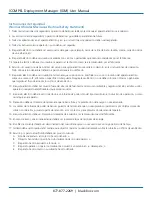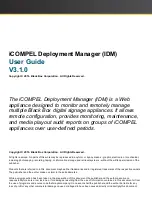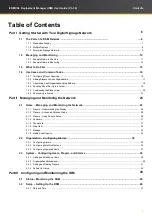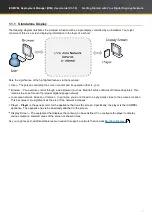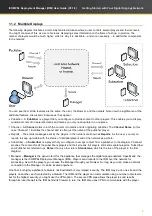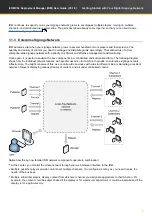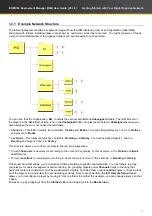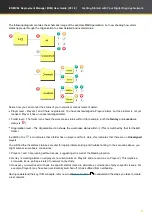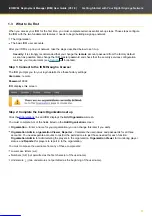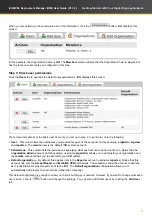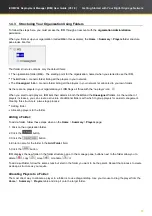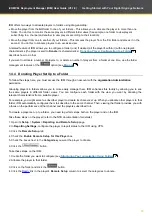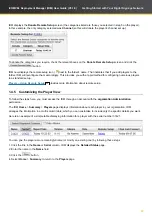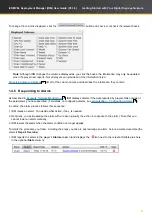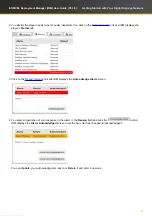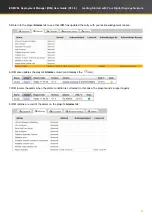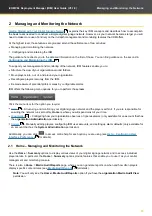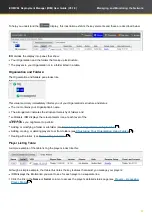
12
iCOMPEL Deployment Manager (IDM)
User Guide (V3.1.0)
Getting Started with Your Digital Signage Network
The reports that individual players send to the
IDM
are instrumental for effective network monitoring. Reports contain a
wide range of diagnostic data about the player and indicators of its operational status. The
IDM
processes that
information and compares the values with the boundary parameters you have specified. If any value falls outside of
those
boundaries, the
IDM
warns you by raising an
Alarm
specific to that condition.
The
IDM
supports an extensive suite of alarms covering very many aspects of player performance and behavior. You
can select which alarms
IDM
observes or ignores and you can configure individual alarms to match your exact
requirements. This allows you to establish a monitoring regime to your desired degree of detail. On that basis,
IDM
continuously updates its display of player, folder, and Organi
z
ation status.
To display the current status,
IDM
uses a system of icons to represent alarm states. The icons are:
– No alarms
– Alarm is raised
– You have acknowledged the alarm
The sequence of actual alarm states is very simple:
1.
IDM
raises an alarm when a player reports out-of-parameter data.
2.
IDM
only lowers the alarm when the player reports that the data is within parameters again.
IDM
offers the intermediate 'acknowledged' state as an assistance to your system-monitoring workflow. The
Acknowledge Alarm
procedure simply provides you with a means to record and track alarms: it does not alter how or
when
IDM
raises or lowers alarms. (
describes how to use the Acknowledge Alarm
procedure.)
Having grouped your players into a meaningful structure, you will want to monitor them in a precise and timely
fashion.
expands the
HQ
Organi
z
ation example to illustrate how
IDM
helps you do
that.
1.2.2 Example Network Monitoring
21




